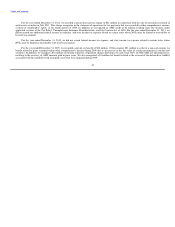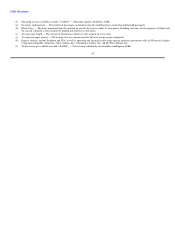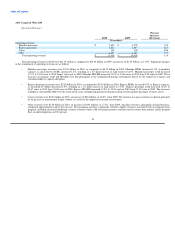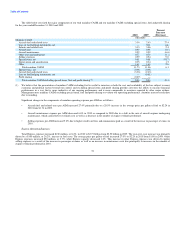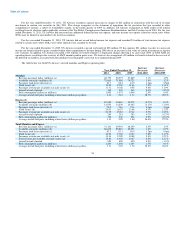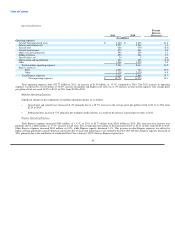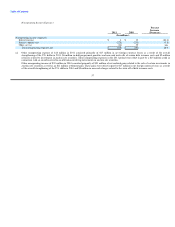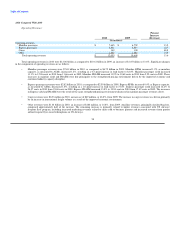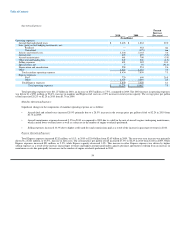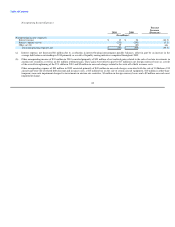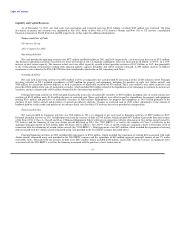US Airways 2011 Annual Report Download - page 54
Download and view the complete annual report
Please find page 54 of the 2011 US Airways annual report below. You can navigate through the pages in the report by either clicking on the pages listed below, or by using the keyword search tool below to find specific information within the annual report.
Table of Contents
The table below sets forth the major components of our total mainline CASM and our mainline CASM excluding special items, fuel and profit sharing
for the years ended December 31, 2010 and 2009:
Percent
Increase
2010 2009 (Decrease)
(In cents)
Mainline CASM:
Aircraft fuel and related taxes 3.36 2.63 27.4
Loss on fuel hedging instruments, net — 0.01 nm
Salaries and related costs 3.13 3.06 2.4
Aircraft rent 0.93 0.98 (4.9)
Aircraft maintenance 0.92 0.99 (6.6)
Other rent and landing fees 0.77 0.79 (3.1)
Selling expenses 0.59 0.54 9.0
Special items, net 0.01 0.08 (91.7)
Depreciation and amortization 0.35 0.34 1.5
Other 1.67 1.63 2.6
Total mainline CASM 11.73 11.06 6.1
Special items, net (0.01) (0.08)
Aircraft fuel and related taxes (3.36) (2.63)
Loss on fuel hedging instruments, net — (0.01)
Profit sharing (0.07) —
Total mainline CASM excluding special items, fuel and profit sharing (1) 8.30 8.34 (0.4)
(1) We believe that the presentation of mainline CASM excluding fuel is useful to investors as both the cost and availability of fuel are subject to many
economic and political factors beyond our control, and excluding special items and profit sharing provides investors the ability to measure financial
performance in a way that is more indicative of our ongoing performance and is more comparable to measures reported by other major airlines.
Management uses mainline CASM excluding special items, fuel and profit sharing to evaluate our operating performance. Amounts may not recalculate
due to rounding.
Significant changes in the components of mainline operating expense per ASM are as follows:
• Aircraft fuel and related taxes per ASM increased 27.4% primarily due to a 28.5% increase in the average price per gallon of fuel to $2.24 in
2010 from $1.74 in 2009.
• Aircraft maintenance expense per ASM decreased 6.6% in 2010 as compared to 2009 due to a shift in the mix of aircraft engines undergoing
maintenance, which carried lower overhaul costs as well as a decrease in the number of engine overhauls performed.
• Selling expenses per ASM increased 9.0% due to higher credit card fees and commissions paid as a result of the increase in passenger revenues in
2010.
Express Operating Expenses:
Total Express expenses increased $210 million, or 8.4%, in 2010 to $2.73 billion from $2.52 billion in 2009. The year-over-year increase was primarily
driven by a $160 million, or 26.2%, increase in fuel costs. The average price per gallon of fuel increased 27.0% to $2.29 in 2010 from $1.80 in 2009. Other
Express expenses increased $50 million, or 2.7%, while Express capacity decreased 1.0%. This increase in other Express expenses was driven by higher
selling expenses as a result of the increase in passenger revenues as well as an increase in maintenance costs due principally to increases in the number of
engine overhauls performed in 2010.
51




